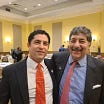|
Goldstein For Congress - Please Subscribe and also visit us at www.goldsteinforcongress.com
Health Care Crisis: Lower Salaries and Fewer Benefits for Regional Doctors Increases Shortage of Medical Professionals
Patient Care to Suffer without incentives and financial solutions to avoid the medical iceberg
 |
Throughout the country (including, the Northeast) there are pockets of physician shortages, especially Primary Care Physicians. Since we live in a free market economy, the average base salaries in rural areas have declined by $23,568 from $288,257 to $264,687 without factoring in inflation.
Job-related incentives have also fallen. The result is an 82 percent reduction is practicing in a rural area from 3.4% to 0.62%. This is a trainwreck for healthcare, especially for any rural area. Source
What are the solutions?
Loan forgiveness. Underserved communities could provide such loan forgiveness for doctors working in medically underserved areas. These communities need to be proactive in attracting doctors by offering incentives to doctors to come to avert a crisis.
Low Rents. Real estate is a large expense for a medical practice, especially with the building code requirements for medical facilities. These could be offset with lower rents and/or tenant improvement assistance for medical office construction/conversion. It goes back to the Field of Dreams - If you build it, they will come.
Foreign Doctors. Through every labor crisis, trained foreign workers alway tend to be a temporary solution. It comes with cheap labor and is fraught with exploitation with promises of visa extensions or deportation threats, especially in these rural areas which must be solved for. It is a band-aid not the solution.
There are two types of Foreign Physicians: US-Trained and Non-US trained.
US-Trained physicians that are licensed in foreign countries should have an easier acclimation to participating and/or running their own practices.
Non-US trained physicians can be permitted to practice here provided that there is a supervisory physician with regular licenses granted after 3-5 years of this kind of care much like other professional trades.
Increased Reimbursement Rates. State-regulated insurance reimbursement rates need to be made attractive to keep and recruit rural physicians.
Medical Billing and Practice Management. Efficiencies are critical especially with declining fee schedules and a greater need for practice optimization to improve payments to care providers across all sectors, especually primary care practices where the squeeze is the tightest.
Increased Incentives. Medical care needs to be viewed as a business and local communities and states that offer incentives to attract small and medium businesses to their community must do the same to attract doctors to their communities. While such incentives look at improvements in infrastructure and education, healthcare assessments need to be part of that equation.
Rural residents should not have to suffer from un-necessary shortages of care because of geographic location which used to be the beacon of community care which should be a growing and not a declining area.
We all have a vested interest in solving this problem before it is too late especially as:
1) Baby boomers retire from medicine and become patients and users. Demand for senior living facilities will increase;
2) Medical school enrollment decreases;
3) America continues to becomes less healthy and the efforts to Make America Healthy Again will take time to have a meaningful impact in reducing health care costs;
4) Health care costs continue to increase; and
5) General care continues to become less affordable.
Young physicians who are ready to enter practices are less likely to stay in states in the Northeast (like New York and Connecticut) because of the high cost of living and the high tax rates. Instead, they are opting to locate to lower taxation states with lower costs of living, especially housing which factors into their ability to service student-loan debt.
With an aging population and the explosion of technology to provide better care, we will be less able to provide this care unless we have and adequate supply of doctors who are not debilitated by overwhelming debt and the lack of freedom to be able to afford in more expensive states.
Without changes in our healthcare system rural communities will not be the only place where there will be physician shortages. They will become common to urban centers as well.
Thank you for your continued support and please reach out for assistance. Please subscribe and spread the word as we need your support to grow this message
Dr. Michael Goldstein & Jonathan Goldstein
The father-son team continues on so please spread the word and lets really rebuild CT together in a meaningful way.
Dr. Michael Goldstein has more than 40 years of medical practice experience and Jonathan has worked with him and other medical practices to help solve their pain-points. This healthcare issue will need local, community and state buy-in for long-term solutions that entice businesses to re-locate.
Please subscribe and support.
Michael’s Substack is free today. But if you enjoyed this post, you can tell Michael’s Substack that their writing is valuable by pledging a future subscription. You won't be charged unless they enable payments.
